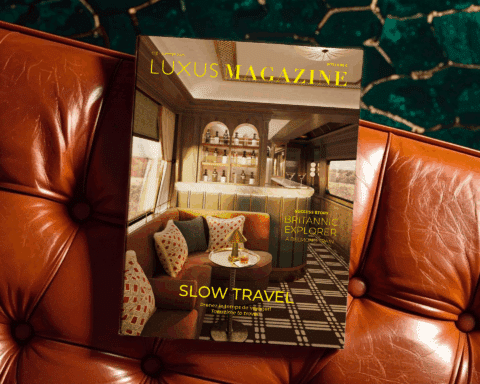To celebrate the 80th birthday of the “Terrible child of fashion” , we looked back at the tumultuous career of the iconic Vivienne Westwood.
The very famous designer Vivienne Westwood celebrated her 80th birthday on April 8, the ideal opportunity to retrace the career of the one who was a precursor of the punk fashion in the 70s. Winner of several awards, she was recently awarded the Dame Commander of the Order of the British Empire. Passionate, committed, and rock’n’roll, Ms. Westwood can boast of having revolutionized the fashion of an entire era during her 50-year career.
The designer Vivienne Westwood was born in 1941 in a small village in Cheshire (now Derbyshire), England. Her father was a modest shoemaker, and her mother worked in a cotton mill. The eldest of three children, Vivienne Westwood (born Vivienne Isabel Swire) grew up learning the Calvinist doctrine. In the 1950s, her family moved to a town in the northwestern suburbs of London called Harlow.
The young Vivienne soon became interested in fashion and left home at the age of 17 to attend a London school, Harrow School of Art (now the University of Westminster), where she studied fashion. However, after graduation, Vivienne Westwood turned first to teaching and taught elementary school classes until 1971.

In 1962, Vivienne Isabel Swire married Derek Westwood, with whom she had been in a relationship for three years. He was then the head of a London nightclub, and Vivienne was a nightlife enthusiast. The couple moved in together the year of their marriage, and have a son, Benjamin Westwood. Their marriage ended in 1966, when a decisive character burst into Vivienne’s life.
A year earlier, Vivienne Westwood met the man who would forever change the course of her life, Malcolm McLaren. Malcolm McLaren was then an art student and lived with his brother. She then divorced Derek Westwood, while keeping his name, and a son with Malcolm in 1967, Joseph.
An activist in the soul, Malcolm participates in the student revolts of 1968, and he initiates Vivienne to the detour, a situationist strategy that consists of using the aesthetic, especially in the fashion world, as a weapon of political protest. In 1971, Malcolm McLaren and Vivienne Westwood, along with Malcolm’s friend Patrick Casey, set up a store in a dimly lit boutique at 430 Kings Road in London. The store would go by several names, starting with “Let It Rock”, specializing in the sale of vintage 50s urban clothing and graphic t-shirts with anti-system messages.
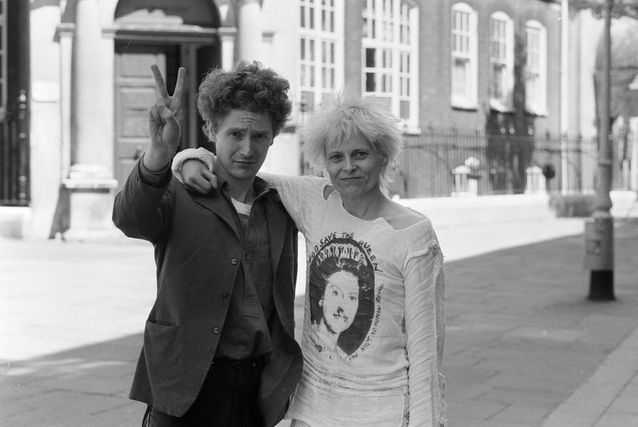
Vivienne made provocative pieces and this period had a great influence on the designer’s style. It was the beginning of the punk era, and the store marketed leather pants with sadomasochistic inspirations that made the conservative British blush with anger. However, the collections offered by the couple were a great success, and stocks were quickly sold out. The store then followed the trends and renamed itself “Paradise Garage”, inspired by the “bikers” style, very popular at the time thanks to the movement initiated by Elvis Presley, the “Teddy Boys”. Vivienne Westwood added studs, chains and sequins, and made t-shirts with slogans such as “Rock and Roll” or “Elvis”.

In the mid 70’s, the store was renamed “Too Fast To Live, Too Young To Die” and was inspired by the influence of the 40’s, attracting the public of the London undergrounds. In 1974, the store became “SEX”, and Vivienne became interested in leather and sexy outfits. Some pieces containing pornographic visuals were even banned as being too explicit. The name of Vivienne Westwood and her creations began to spread throughout England, and thanks to his contacts in the music industry, Malcolm McLaren introduced her to the Sex Pistols, whose manager he was, as well as the New York Dolls, whom Vivienne dressed. The groups served as a showcase for her creations, but they were also a pretext for the designer to expose her political convictions, with slogans such as “Down with Coca-Cola”.
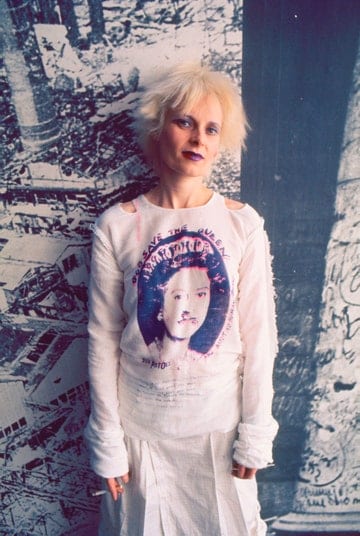
In 1977, Vivienne Westwood renamed her Chelsea boutique “Seditionaries: Clothes for Heroes”, a way of further asserting her opposition to the established order. As the Sex Pistols’ hit “God Save the Queen” became a worldwide success, Vivienne designed her famous t-shirt with the face of the Queen of England. In 1981, she organized her first fashion show in London, which she called “Pirates”. The show was hailed by critics and Vivienne Westwood was propelled to the forefront of the scene. The designer chooses, each season, a particular theme for her shows. In 1982, she launched the “Savage” collection, an ode to the Wild West and Native American culture. But in 1983, the couple formed by Vivienne and Malcolm split up abruptly, and the stylist decided to rename her store “World’s end”, and was saddened by the fate of the punk style, which the public had seized without necessarily sharing her vision.
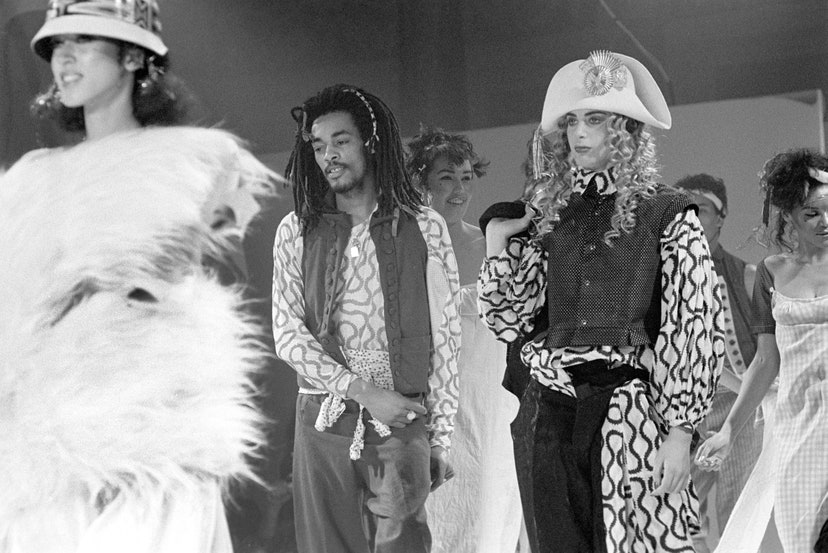
Nevertheless, this did not prevent Vivienne Westwood from renewing herself more and more, and the same year, she imagined a collection inspired by Philip K. Dick’s novel, Blade Runner, and unveiled her “Punkature” line. Her fall-winter 1984-1985 collection was named Clint Eastwood, in reference to the famous Hollywood actor. The designer then loves historical inspirations, and makes several nods to the romantic Victorian era, as with his spring-summer 1985 collection, entitled “Mini-Crini”, where the designer revisits the outfits of the 17th century as Westwood.
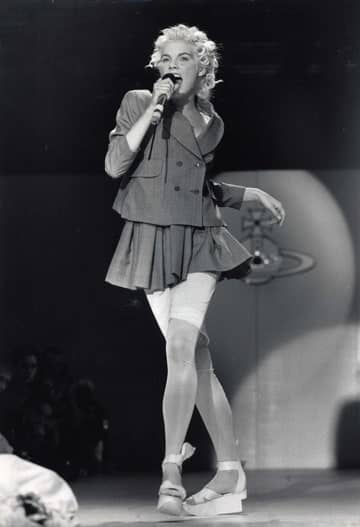
In the 80s, Vivienne Westwood’s style was turned upside down and the designer closed the door on the punk movement to devote herself to what is called her “pagan years”, where the designer was inspired by the clothes of the upper-middle class. During the fall-winter 1987-1988 season, the Harris Tweed collection influenced a whole generation. In an interview with The Independent magazine in 2011, Vivienne explains where she got the inspiration for this famous collection. A little girl she saw on a train inspired her to design the pieces: “She couldn’t have been more than 14 years old. She had a little braided bun, a Harris Tweed jacket, and a bag with her ballet shoes in it. She looked calm and dignified“.
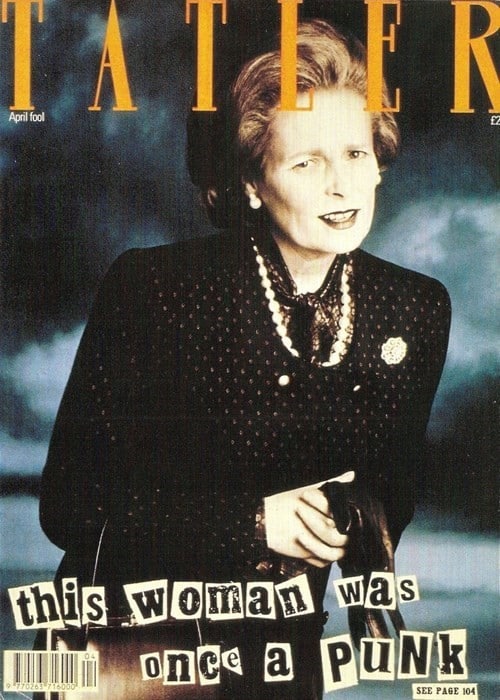
Vivienne continued to express her political views through her art, however, and when she was chosen as the cover of “Tatler” magazine in 1989, the designer imitated Margaret Thatcher, who was then the Prime Minister of Great Britain, wearing a suit commissioned by the Iron Lady herself from the designer. The same year, she was elected by John Fairchild of “WWD” among the six best designers in the world. In the 90s, in the era of supermodels like Naomi Campbell or Kate Moss, Vivienne Westwood again adapts her style and, at the height of her career, the designer is inspired by the tailoring of English and French costumes of the 19th century. In 1993 she married a design student, Andreas Kronthaler, who still shares her life today.
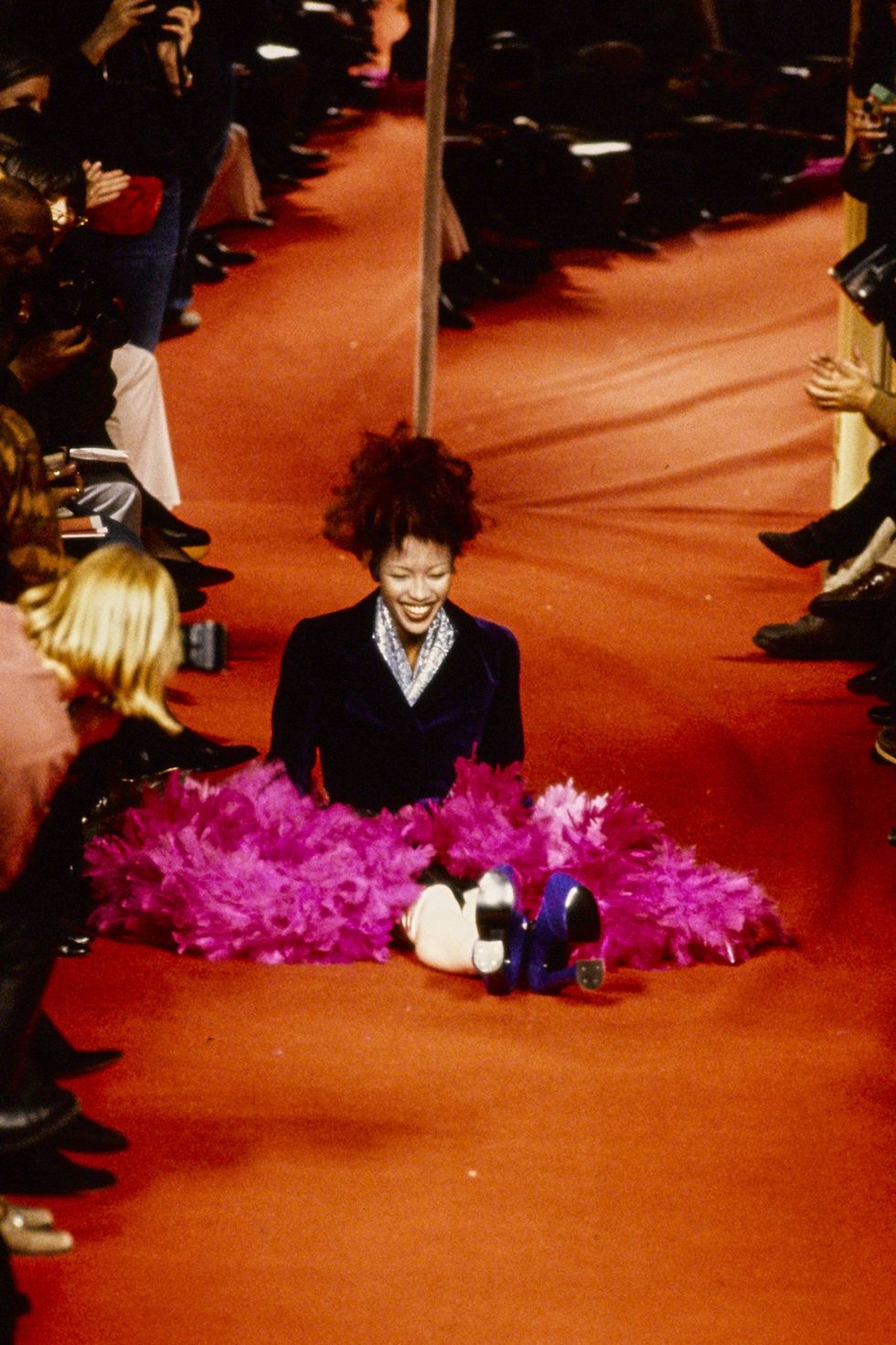
The 90’s were very important years in Vivienne Westwood’s artistic career, and the designer created her first men’s collection. During the fall-winter 1993-1994 show, she dressed Naomi Campbell, who made a memorable fall from the top of her 12 cm heels. For her fall-winter 1994-1995 collection, she brings the outdoor corsets up to date, surprising the critics. Finally, for her spring-summer 1995 collection, entitled “Erotic Zones”, she presented the supermodel Kate Moss, imitating Marie Antoinette, enjoying a chocolate ice cream, topless.
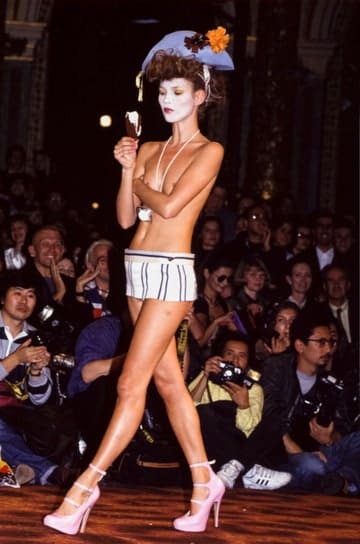
Since the 2000s, Vivienne Westwood has been a fervent advocate for the environment, working with the NGO Greenpeace on the “Save the Arctic” campaign. She designed a graphic t-shirt, showing the earth in the shape of a heart, the profits of which were entirely donated to Greenpeace. “Climate change is my priority, not fashion,” she told The Guardian magazine in 2014. The following year, during a demonstration against shale gas extraction held in London, Vivienne showed up in front of Prime Minister David Cameron’s offices, dressed as a tank.
Voir cette publication sur Instagram
What is certain is that Vivienne Westwood has been able to impose her vision of fashion, regardless of the times and trends, while remaining true to her political convictions and her particular style, which will earn her the title of “British Designer of The Year” for three consecutive years. A precursor of the punk movement, at the forefront of the androgynous movement with the fall-winter 2015-2016 collection, Unisex, Vivienne Westwood has continued to inspire and shape fashion for over 50 years.
Featured photo: © Duncan Atkinson/News Licensing











